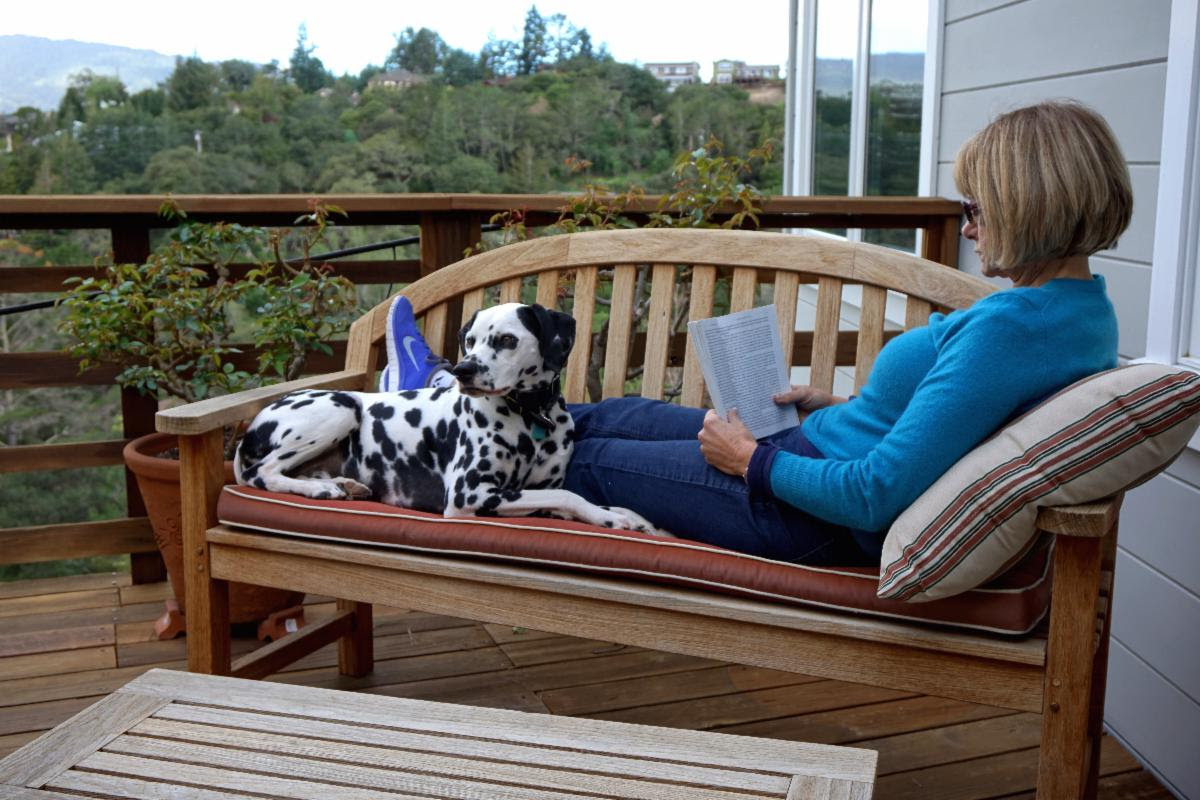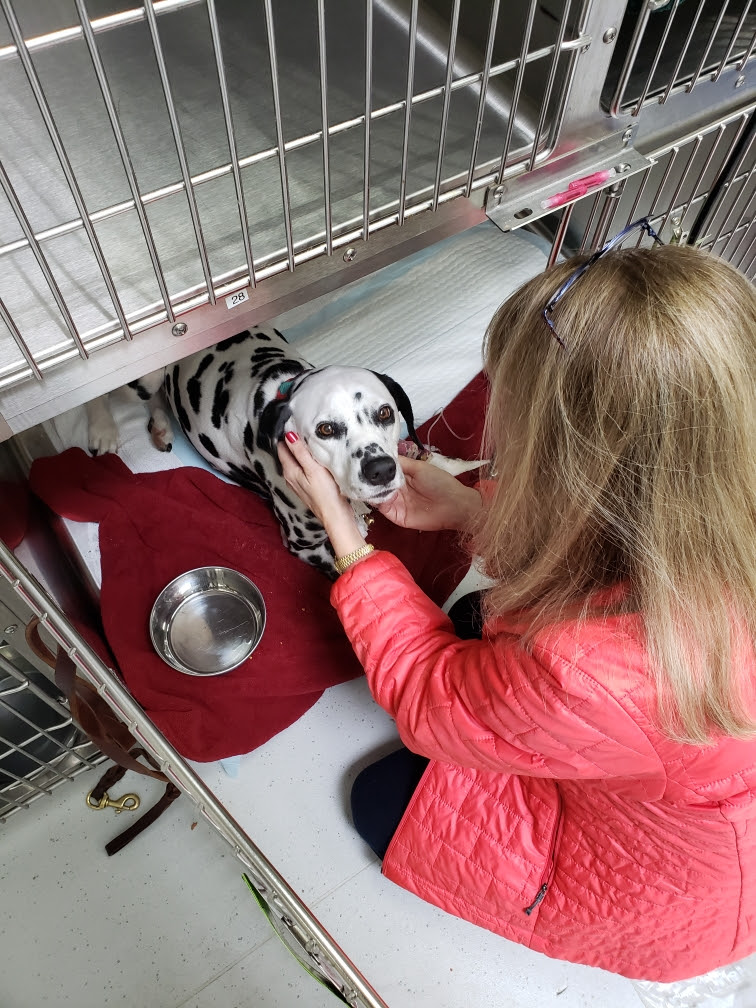I call out Cody’s name but he does not respond. He does not wag his tail, or even look to me for reassurance. His body is stiff, his mouth foaming, his legs paddle in the air, his eyes have rolled back and have no visible iris. He is in the middle of a grand mal seizure.
The middle dog of my Dalmatian pack, the son of Breeze and brother to Mac, Cody was born in our home shortly after the death of Gulliver, who was the dog of my heart. Since then, he is the one with whom I bonded as we showed in the obedience ring; he is the one who gets the special snuggle spot under my left arm every night as I read before bed. He’s a bit of a clown, “talking” non-stop with a variety of different voices while most every emotion known to human-kind crosses his expressive face.

Cody has had idiopathic epilepsy since he turned two, nearly seven years ago. Idiopathic means that the vets do not know the cause of the epilepsy, despite having given him innumerable tests, including a spinal tap and an MRI. He obligingly takes sixteen pills a day–his head tipped back and mouth wide open as I drop them in–and this drug regimen works most of the time. But when it doesn’t, his brain fires off electrical impulses gone wild and his body is the stage for a horror show.
We have been lucky, lately, as Cody had been seizure-free for nearly a year. But then, at five in the morning three days ago, a seizure hit. By the time we got him into the emergency room, five more had rolled in. As I write this today, he is still in the hospital and the neurologist has not yet been able to stabilize him, even with heavy duty IV sedatives. Every time we think we’ve got the situation licked, he seizes again. Will they ever stop? I wonder, with despair. Will he ever come home again? When we visited him in the hospital last night, he looked so lost and alone. I started to cry and then forced myself to stop: the last thing he needed was to be upset by a weepy Mom.
Brad and I have always worked as a team to help Cody through the times when his daily meds just don’t work. We’re used to the onset of a seizure by now, but nothing stops the jolt of adrenaline brought by the sound of his feet hammering against his crate or the floor–especially not in the middle of the night. We hold his head, tell him it will be over soon and stroke him; there’s not much else we can do until it’s over and we can soothe him back to consciousness, clean him up, and cuddle him until he is part of the world once again. Before today, we have never had to deal with a “cluster,” which is what vets call seizures that come one on top of another, like these, and which require long hospitalizations. Now Brad and I can’t be a team for Cody. We stand helplessly on the sidelines, afraid and grieving, able only to see him during visiting hours–when he is unreachable except for a stroke on his face in the crate. And we wait.

How do other people manage to cope with distressing situations like this one? We all hear bad news from time to time: in the last decade I have known over twenty-five people who have died of cancer–some of them friends, some only acquaintances, but part of the statistics nevertheless. Cancer seems to be taking my generation down, just the way heart disease took my parents’. And yet somehow–despite the anxiety, the sorrow, and the fear–we continue. Some of us do it by praying, others by reasoning, still others by connecting with those they love. For me, a mix of all three provides the best answer.
Cody has many fans out there amongst you, and I would ask you all for a group prayer in his name. He is one of my very best friends and I’m not ashamed to put out a call for healing a companion who is a canine, rather than a human. What can make you happier than a cheery face and a tail that swipes the covers off, forcing you from bed to make his breakfast? What can make you more content than a warm nose tucked under your arm as you fall asleep every night? As you go about your routine today, please put in a good word for Cody. He needs every little bit of help he can get.
Yours,


Have a comment or feedback? Talk to Linda!

